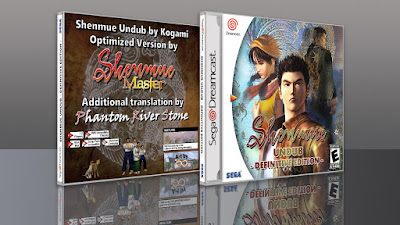We talk about the Dreamcast a lot here at The Dreamcast Junkyard. Of course we do. It’s the reason we’re here (and the clue is in the name). But what we don’t talk about enough is the man who made all of this possible. A man who has spent countless hours researching the most bizarre Dreamcast trivia and interviewing even the most tenuously linked people to our favourite console. I felt it was about time someone put a microphone in front of his face for a change and got a little insight into the history of the Junkyard from a true member of Dreamcast royalty.
Tom is far too humble to reflect on what he’s achieved so far with the Junkyard, and indeed the immeasurable contribution he’s made to the Dreamcast community as a whole. So, if I may, allow me to do it for him. 15th birthday celebrations wouldn't be complete without talking to the man of the moment, so I caught up with him for good old fashioned chinwag.
“Before the Junkyard, I’d created an all-format gaming website on a defunct service called Treeway, where I basically just copied news from other sources and created my own articles about them. Around that time I was quite obsessed with making fanzines as well, and made ‘Cast-Aw@y’ - a Dreamcast magazine”, Tom remembers, keen to point out that he’s very proud of his improper usage of an @ symbol in the title, for full late 90s edginess.
“I had my Dreamcast about two weeks after the UK launch, but a friend of mine had an imported Japanese system just after it launched there. We would play games like Tokyo Highway Challenge and be absolutely blown away by the graphics. That was my first real experience of the Dreamcast and once I’d saved enough money from my paper round, and sold my N64, I was able to get a console for myself.”
Tom grew his Dreamcast collection throughout its short life, and then he did the unthinkable…
“In 2001, I made the very foolish decision to part-exchange my Dreamcast and all of my games for a PlayStation 2 and the latest NHL game. It was only when I got home and played it that I realised I’d made a big mistake,” says a teary-eyed Tom. Luckily for us, it was not too long until he was a Dreamcast owner once again.
“When I went to university I managed to buy another Dreamcast bundled with Metropolis Street Racer, Jet Set Radio and Virtua Fighter 3TB which was ultimately replaced when I graduated, with a shiny new Xbox and Gamecube. And then in 2005, I’d been to visit my dad and I was standing at a bus stop which was right next to a GameStation store. I was just looking in the window and there was a Dreamcast there for £40 or something with a load of games, which was too good for me not to buy. I took it home and showed all my housemates and they loved it too. So I started buying up all the games again and one day had an epiphany to document my purchases and experiences in general on a blog, and the Junkyard was born.”
A blog which would ultimately turn into one of, if not the biggest Dreamcast fansite on the web.
“I had an affinity with the Dreamcast because it was the last SEGA console and me and my brother had a SEGA childhood with the Mega Drive, Mega CD, 32X and the Saturn - it was always a SEGA household. My love for the system really grew after I set up the Junkyard because I started to explore the more obscure and import titles rather than the games that everyone knew.”
Tom’s early vision for the Junkyard was purely a blog set up out of boredom.
“There was no real vision in all honesty. It was a case of being bored and wanting to document what I’d bought. I was accepted into the Navy and was waiting to join - which took months - so I was taking on temporary jobs and spending the money I made on Dreamcast games and accessories. In reality, going on day trips to different towns to visit small independent gaming shops and then blogging about it was just my way of killing time.”
“It was a bit like a diary. I didn't expect anyone to read it. I was doing it purely for my own enjoyment and entertainment, and then slowly but surely a couple of people started commenting on the posts. I was completely oblivious to other online gaming communities at the time and so to me, this was all quite new and exciting - I felt like it was all happening inside a bubble.”
As the community started to grow and more and more people commented on Tom’s hard work, he’s in no doubt that this pushed him to keep updating the Junkyard and find new ways to engage with his newfound audience.
“Yeah, it definitely spurred me on. You'll notice that there is a definite turning point in the very early days where it went from just being a blog with random nonsense about the games I’d bought to doing actually researched features and reviews. I don't think anywhere else was really doing that at the time, not for the Dreamcast anyway as it was becoming something of a forgotten console.”





















































